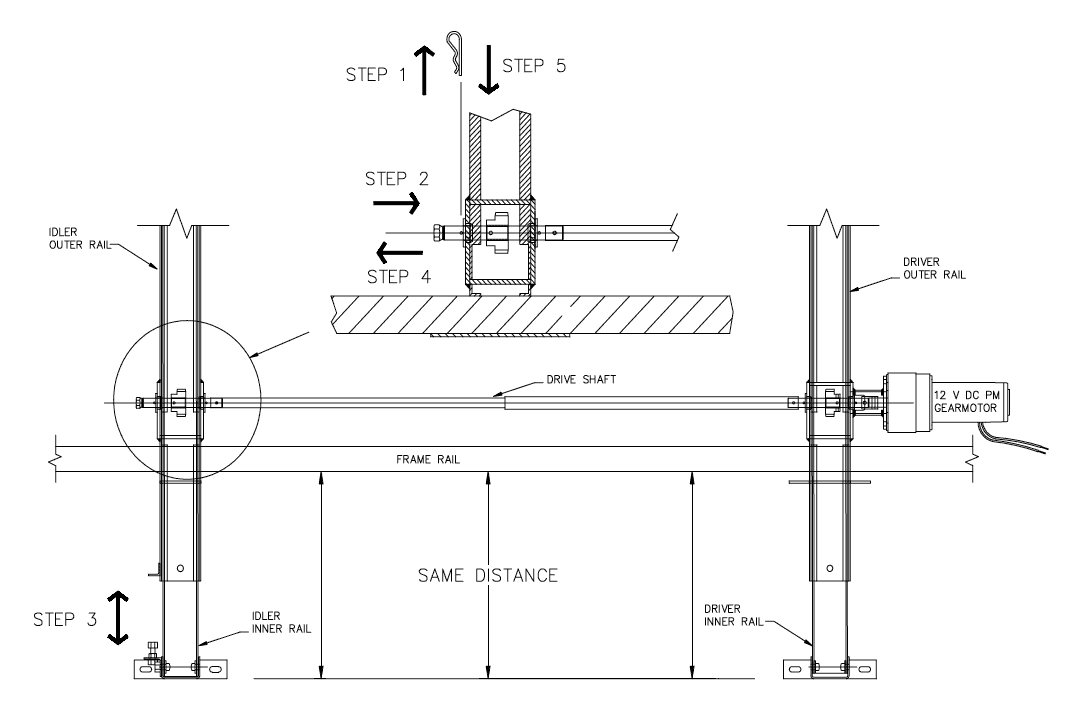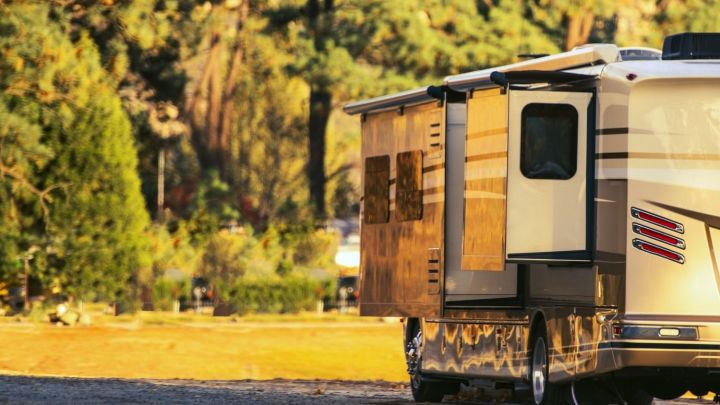RV slides are essential for transforming a recreational vehicle, which is typically somewhat narrow, into a cozy house. However, a surprising number of RV owners may not have a strong grasp of this essential component of their vehicle.
Continue reading as we cover everything you need to know about these amazing things that can enlarge your perception of space.
What Exactly Is a Slide for an RV?

A slide is a portion of an RV or trailer that extends outward from the main body of the vehicle and can be found protruding from either the side or the back of the vehicle. While retracted, RV slides to allow your vehicle to keep its regular, safe width for driving, but when parked, they allow you to make the most of your limited living space.
You might have anything from one to five slides, depending on the size of your RV. They can increase the size of your primary bedroom, living room, or kitchen space. There are certain RVs that have slides that go all the way across the wall, allowing the entire side of the RV to move in and out.
RV Slide Out Types
RV slide-outs come in a variety of varieties, and they all function somewhat differently. Many work using electric motors, while others use hydraulics. The rack and pinion system is the most prevalent sliding-out mechanism. Other systems include hydraulic, Schwintek, pulley, and cable.
Slide Outs for the Pulley and Cable

Pulleys and cables are used in a select number of recreational vehicle (RV) slide-outs, but this type of mechanism is much less frequent. The most expensive system is one that uses pulleys and cables to slide out objects. On the other hand, this is not for no good reason. In comparison to other electrically driven systems, a cable pulley arrangement is not only extremely lightweight but also enables the use of larger, heavier slide-outs.
But how exactly does the system of pulleys and cables function? It employs eight cables, four of which are used to pull the slide out and four of which are used to pull the slide in. These cables are attached to all of the inner and outer corners of the slide. The cables are routed via a number of pulleys and are linked to a chain at the end of the process (think bicycle chain). The chains are fastened to a shaft that extends from the gearbox and is driven by an electric motor on the outside.
The pulley and cable systems used for slide-outs are likely the most dependable of the available options. They require virtually minimal maintenance other than an annual visual inspection to ensure that all of the cables are in satisfactory condition.
Power Gear Slide Out System

RV Slide-Out Diagram Showing the Wiring System.
They are utilized in conditions in which Schwintek’s capacity to hold the weight of the slide-outs is exceeded by a significant amount.
It’s quite lightweight, and it almost fits flush against the wall. Although it is a more expensive system, it is also an electric slide system that moves at the fastest possible speed. There will be a step up into the slide, but the motor mechanism is concealed in the floor of the slide out, so you won’t see any of it on the outside or the inside of the slide. However, there will be a slide-out.
Slide-Out Systems that Are Powered Hydraulically
Hydraulics are typically employed for RV slide-outs that are larger and heavier because, despite the fact that they are more complicated, they are able to create far more pushing (or pulling) power. It operates in a manner that is mechanistically analogous to a rack and pinion sliding mechanism.
Within a hydraulic system, a piston (and the RV slide out that is attached to it) is moved toward the extended end of its chamber by a pump that forces hydraulic fluid via tubes. This raises pressure within the system. The pressure can be switched over by pumping the hydraulic fluid in the other direction, which causes the piston (and the RV slide out) to move back to the retracted position.
Your slide will be moved very rapidly by hydraulic systems, allowing you to set up in almost no time at all. It is also less expensive to have numerous hydraulic slides in your RV if it has two or more slides than it is to have several electric slides because all of the slides will share the same hydraulic system and engine.
RV Slide-Out Maintenance Tips
- The operation of an electric slide-out motor requires a battery that is completely charged and draws a significant amount of current. Connecting to the power source at the dock will assist in supplying the necessary voltage and current and will prevent the system from being overworked. Typically, a circuit board and a relay are utilized in order to control the slide-out motor. On the circuit board or on the power line that powers the slide-out motor will be a fuse. This fuse will protect the motor from damage.
- It is essential to do routine maintenance on the slide mechanism. As it goes in or out, the chamber maintains its free-floating state. In a mechanism like this, the rollers that bear the weight and the rails that direct the room to its final destination are also standard components. Lubricating the rollers and rails on occasion is necessary for preventing wear and protecting the metal components from rust and corrosion. These issues can be avoided by maintaining a consistent level of lubrication. There are a variety of lubrication points available, depending on the manufacturer. Watch this little video and read the accompanying text to learn how to properly lubricate a Schwintek Slide-Out System manufactured by Lippert.
- Protecting against rust and corrosion, slide-out lubrication or dry lube protectant works by penetrating the spaces around moving parts. In addition to being an effective treatment for leaf springs, steering and suspension components, battery connections, and any other metal surfaces that are prone to rust and corrosion, this lubricant is also an outstanding anti-rust agent.
RV Slide-Out Drawbacks
Slides Outs Often Have Thinner Walls Than the Rest of the RV
Walls in RVs are often only an inch or two thick. In most cases, they consist of little more than a thin slab of insulation that has a thin metal plate on one side and a piece of paneling on the other side of the slab. Even thinner barriers are typically found on slides that fold out.
Because they are only exposed when the RV is parked, the protective shielding around them is purposefully made to be less robust. This increase in the surface area leads to a larger transmission of heat, making it more difficult to keep your RV cool when it’s hot outside or warm when it’s freezing outside. This is especially true if the additional walls are less insulated than the rest of the RV.
Leaking
Rubber that is used to establish a seal around the seams of a slide-out is prone to wear and tear, and it dries out over time, becoming more rigid and less effective at creating a barrier than it was when it was first installed. At some point in time, water will make its way through the cracks.
In extreme circumstances, you might detect a dripping, but it is more probable that water will accumulate out of sight, where it will cause the wood or metal that is structurally important to the slide out to corrode or rust.
Conclusion
Any RV that is five years old or newer is almost certainly going to have at least one slide-out installed somewhere inside of it. This slide-out may be used to enlarge the space of the master bedroom or to make the living area more open and spacious. You are the only one who can ensure the longevity of your slide-outs by becoming familiar with how they operate and performing routine maintenance on them.

